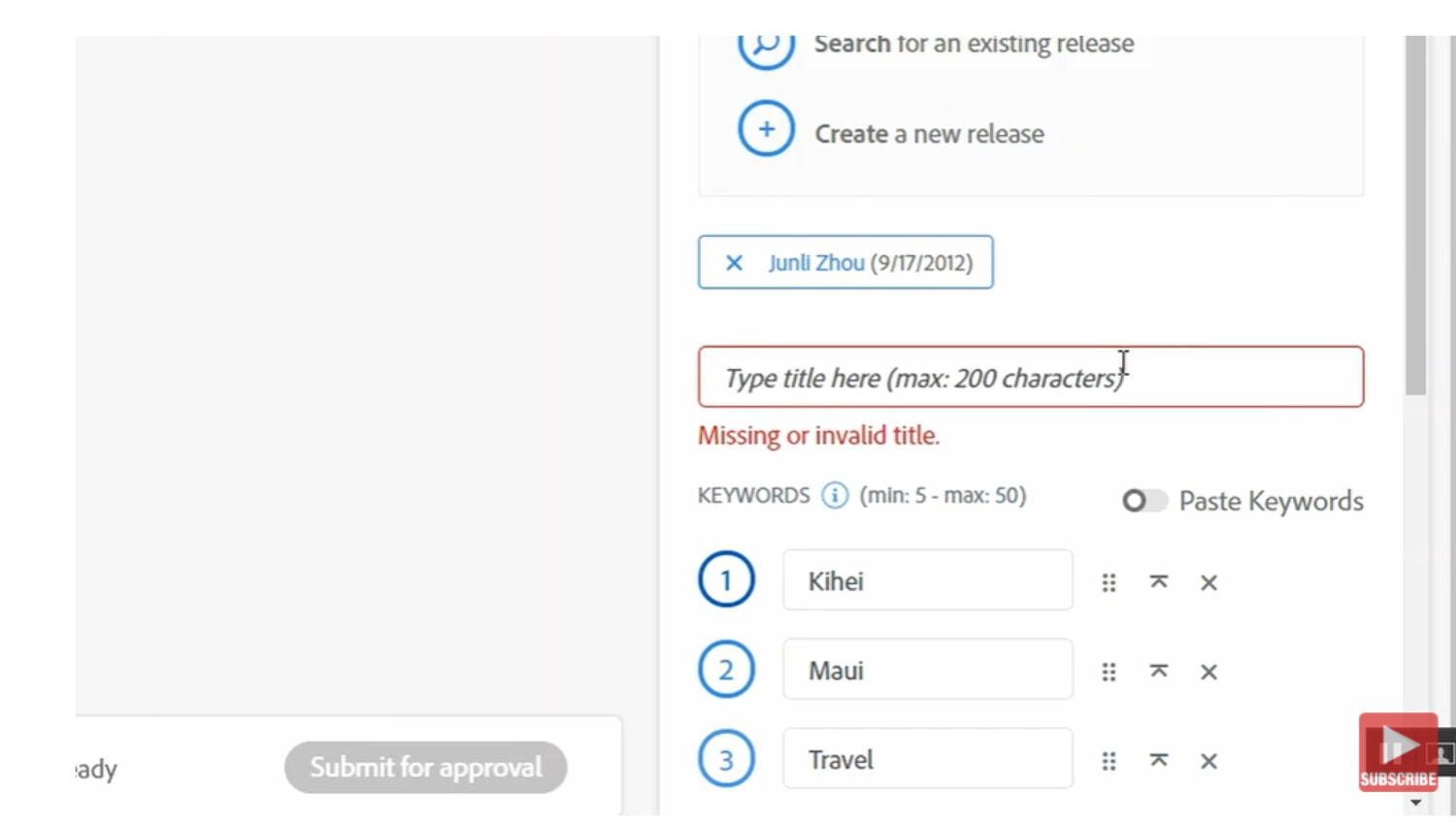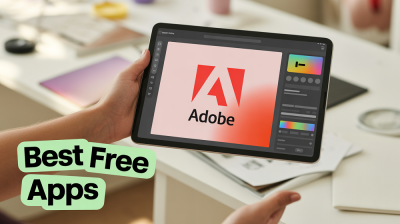Adobe Stock has become a go-to platform for many creatives and businesses looking to source high-quality images, videos, and templates. If you're a contributor, you might be wondering how the payment system works and what to expect. In this blog post, we’ll dive into the fundamentals of Adobe Stock, covering how it operates and the compensation system for contributors.
How Adobe Stock Compensation Works

Understanding how you get paid as a contributor on Adobe Stock is crucial for managing your expectations and making the most of your contributions. Let’s break it down!
1. Sales Models: Adobe Stock operates on a royalty-based compensation model. Here are the primary sales models you might encounter:
- Standard License Sales: When you contribute content, it can be licensed under a standard license, allowing users to use your image in web and print projects without any limitations on views or impressions.
- Enhanced License Sales: For images that require higher resolution or additional rights, such as products or merchandising, you earn more with an enhanced license. This is beneficial for popular images.
2. Contributor Earnings: The amount you earn per download varies based on several factors. Here’s a quick overview:
| Type of Sale | Earnings per Download |
|---|---|
| Standard License | $0.33 - $0.50 |
| Enhanced License | $2.00 - $20.00 |
Your earnings can also be influenced by your contributor level. Adobe has a tiered system, which means that the more you contribute and the more successful your content is, the higher your compensation percentage can be. This encourages quality submissions and helps you earn higher payouts over time.
3. Monthly Payout Threshold: Adobe Stock has a minimum payout threshold that you need to reach before you receive your payments. This threshold may vary by country, but it is often set at $25. Once you hit that amount, you can request a payment. Payments are usually made monthly and can be received via various methods, including PayPal and bank transfer.
4. Tracking Your Earnings: Contributors have access to an insightful dashboard where you can track your downloads, earnings, and performance over time. This is a great way to see which of your content resonates most with buyers and helps you strategize your future contributions.
In summary, contributing to Adobe Stock can be a rewarding experience if you understand the compensation structure and sales models. Keep these essentials in mind, and you'll be better positioned to maximize your earnings and make the most of your creative work!
Also Read This: Understanding How Licensing Works on Adobe Stock
3. Factors Influencing Contributor Payments
When it comes to understanding how payments work for Adobe Stock contributors, there are several factors at play. Let’s break down the key elements that can influence your earnings.
1. Content Quality: First and foremost, the quality of your images, videos, or illustrations is a huge factor. Adobe Stock is known for high standards, so the more professional and visually appealing your submissions are, the better chance you have to sell them. This means investing in good equipment, paying attention to composition, and ensuring your work is technically sound.
2. Exclusivity: Are you sharing your work exclusively with Adobe Stock, or is it available on other platforms? Exclusive contributors often enjoy higher commission rates. If you choose to make your content exclusive to Adobe, you may find that the rewards are worth it in the long run.
3. Market Demand: Just like any marketplace, demand plays a crucial role in your earnings. Some subjects or styles might be in higher demand than others. For instance, if you create content related to current trends, holidays, or popular themes, you're more likely to see your work sell. Keeping an eye on market trends can help you tailor your submissions accordingly.
4. Licensing Type: Payments also vary based on the type of license your content receives. Adobe Stock offers different licensing types, such as standard and extended licenses, each with different price points and resulting payout percentages for contributors. Knowing how these licenses work can help you strategize your submissions.
5. Sales Volume: The number of downloads is essential as well. The more your work is downloaded, the more you earn. Building a portfolio with a diversified range of content can help increase your overall sales. Think about creating a series or a collection that encourages users to buy multiple images or videos from you.
6. Your Contributor Rank: Also, keep in mind that your contributor status can impact your payments. Adobe Stock uses a tier system where consistent contributors with good sales history may receive higher rates. This means engagement and consistency in submitting quality content can pay off over time.
Also Read This: How to Download Adobe Stock Images After Licensing
4. Payment Rates for Different Types of Content
Now that we’ve covered the factors influencing payments, let’s dive into the nitty-gritty of payment rates for different types of content on Adobe Stock. Understanding these rates can help you assess how to maximize your earnings effectively.
Overall, Adobe Stock’s payment structure is relatively straightforward and typically breaks down as follows:
| Content Type | Standard License Payout | Extended License Payout |
|---|---|---|
| Photos | $0.33 - $3.00 | $10.00 or more |
| Illustrations | $0.33 - $2.50 | $10.00 or more |
| Videos (HD) | $1.50 - $20.00 | $50.00 or more |
| Videos (4K) | $4.00 - $50.00 | $100.00 and up |
As you can see from the table, different content types have varied payout structures. Here are some important considerations:
- Photos: For high-quality photos, the payouts can vary significantly based on their usage in commercial projects. Create versatile images that have broad appeal to maximize sales.
- Illustrations: Similar to photos, illustrations can generate good revenue, but you'll want to focus on trending topics or unique styles that set your work apart.
- Videos: Video content is booming, and Adobe Stock offers a substantial payout for quality videos. The difference between HD and 4K video rates can be significant, so if you have the skills, invest in creating high-resolution content.
In summary, the types of content you create can greatly impact your earnings on Adobe Stock. Focus on creating quality submissions, keeping an eye on market trends, and potentially exploring video content for higher payouts. Happy creating!
Also Read This: How to Create an Engaging Carousel Post on LinkedIn
5. How to Maximize Earnings on Adobe Stock
If you're looking to boost your earnings on Adobe Stock, there are several strategies you can employ. It's not just about uploading great images – although that is certainly a key factor! Here are some tips to help you maximize your income:
- Optimize Your Portfolio: The more high-quality images you have in your portfolio, the better your chances of making sales. It's wise to focus on niches that are in demand but have less competition.
- Understand Keywords: Using the right keywords is crucial. Conduct research to find out which terms photographers are using in your niche. Tools like Google Trends can be a great resource for this.
- Create Trends-Based Content: Keeping an eye on trends can give you a significant edge. Things like seasonal images, event-based photography, or even trending social media topics can help attract buyers.
- Regular Uploads: Consistency is key! Aim to upload new content regularly. This not only shows Adobe stock that you are an active contributor but can also keep your portfolio fresh and appealing.
- Engagement with the Community: Participate in forums and groups related to stock photography. Networking with other photographers can provide valuable insights and opportunities for collaboration.
- Leverage Social Media: Share your Adobe Stock images on social media platforms. Engaging with a wider audience can drive traffic to your portfolio and ultimately lead to more sales.
Don't forget that creating a diverse range of content – including images, videos, and vectors – can also help diversify your income streams on Adobe Stock. By embracing these strategies, you’ll be well on your way to maximizing your earnings as a contributor!
Also Read This: How to Download Files and Projects from Behance
6. Comparing Adobe Stock with Other Stock Photography Platforms
When it comes to selling stock images, Adobe Stock isn’t your only option. There are several platforms out there, each with its pros and cons. Here's a quick comparison to help you navigate the landscape:
| Platform | Commission Rates | Market Reach | Ease of Use |
|---|---|---|---|
| Adobe Stock | 33% on standard licenses | High (integrated with Adobe Creative Cloud) | Very user-friendly |
| Shutterstock | 15% - 40% depending on license type | Very High (one of the largest markets) | Moderate, can be a bit complex |
| Getty Images/iStock | 15% - 45% depending on the exclusivity | High (prestigious platform) | Easy for contributors |
| Dreamstime | 25% - 60% | Moderate | Good, but interface can be outdated |
Adobe Stock stands out due to its smoother integration with Adobe Creative Cloud. This also means that designers and creatives who use those applications are likely to gravitate towards Adobe Stock when looking for assets.
On the other hand, platforms like Shutterstock boast a large market reach, which can be advantageous in terms of the volume of potential customers. However, their commission rates can be lower for new contributors.
In summary, choosing the right platform depends on your own priorities, whether that be commission rates, ease of use, or access to a robust consumer base. Weighing the pros and cons can help you decide where to invest your time and talents. In the highly competitive world of stock photography, being informed is vital!
Also Read This: How to Put Music on YouTube Videos Without Copyright Issues
7. Success Stories from Adobe Stock Contributors
Many contributors have found remarkable success through Adobe Stock, turning a creative passion into a sustainable income. Let’s take a closer look at some inspiring success stories that highlight the potential of selling your work on this platform.
1. A Photographer’s Journey: Take the case of Sarah, a freelance photographer who decided to upload her travel photography to Adobe Stock. Initially skeptical, she started sharing her stunning nature shots and soon noticed a steady stream of downloads. Within a year, Sarah was earning enough to cover her travel expenses, allowing her to explore new destinations while getting paid for her art. She emphasizes the importance of consistency in uploading new content to keep her portfolio fresh and appealing.
2. A Graphic Designer’s Adventure: Then there’s Tom, a graphic designer who specializes in illustrations. He’d always dreamed of having his designs reach a broader audience, and Adobe Stock gave him that platform. After just a few months, Tom’s vector illustrations were in high demand, especially among businesses looking for unique branding materials. By using Adobe’s analytics tools, Tom was able to identify popular trends and tailor his submissions accordingly. This proactive approach helped him double his income within six months!
3. Turning Hobbies into Income: Finally, let’s meet Lisa, a hobbyist who loved creating digital art in her spare time. When she learned about Adobe Stock, she decided to try selling her artwork. To her surprise, her quirky designs resonated with buyers, leading to thousands of downloads. Today, Lisa has made Adobe Stock a significant part of her income strategy, proving that even hobbyists can thrive on this platform.
These stories show that success on Adobe Stock is not just a pipe dream but a realistic goal for anyone willing to share their creativity and dedication. With the right strategy, your passion could also pave the way for financial success, just as it did for Sarah, Tom, and Lisa.
8. Conclusion and Final Thoughts on Adobe Stock Payments
Understanding Adobe Stock payments as a contributor is key to making the most of your creative efforts. Since Adobe Stock operates on a simple yet effective commission model, contributors can earn varying rates based on the type of content and their subscription tier. Payments are typically made monthly, which helps maintain a steady cash flow for contributors seeking to grow their businesses.
Final Tips:
- Regular Uploads: Consistently uploading new and high-quality content is essential. The more diverse your portfolio, the more likely you are to attract buyers.
- Stay Current: Keep an eye on industry trends and popular purchasing patterns. This knowledge can inform your work and help you create content that sells well.
- Engage with the Community: Join forums or social media groups dedicated to Adobe Stock contributors. Sharing experiences and tips can greatly enhance your strategies.
Remember that success might take time and effort, but with perseverance, many have turned their contributions into a reliable source of income. Ultimately, whether you’re a seasoned professional or just starting out, Adobe Stock offers a unique platform that rewards creativity and dedication. If you’re considering diving into stock content creation, embrace the journey and remain open to learning and adapting. Happy creating!
 admin
admin








